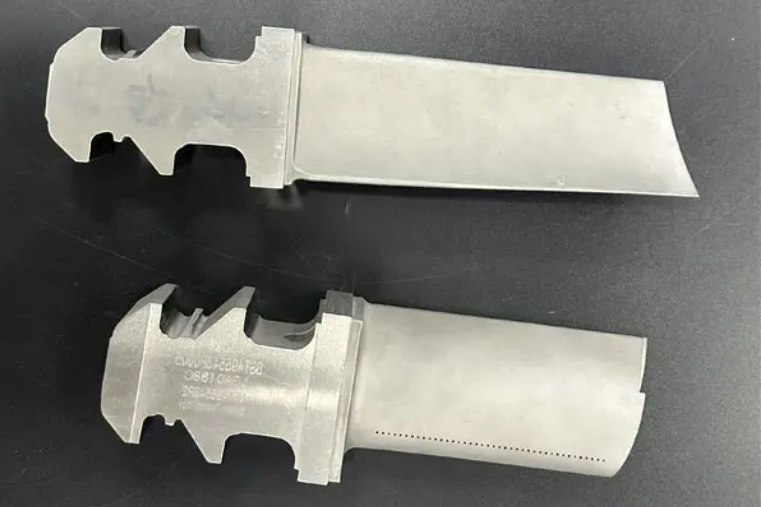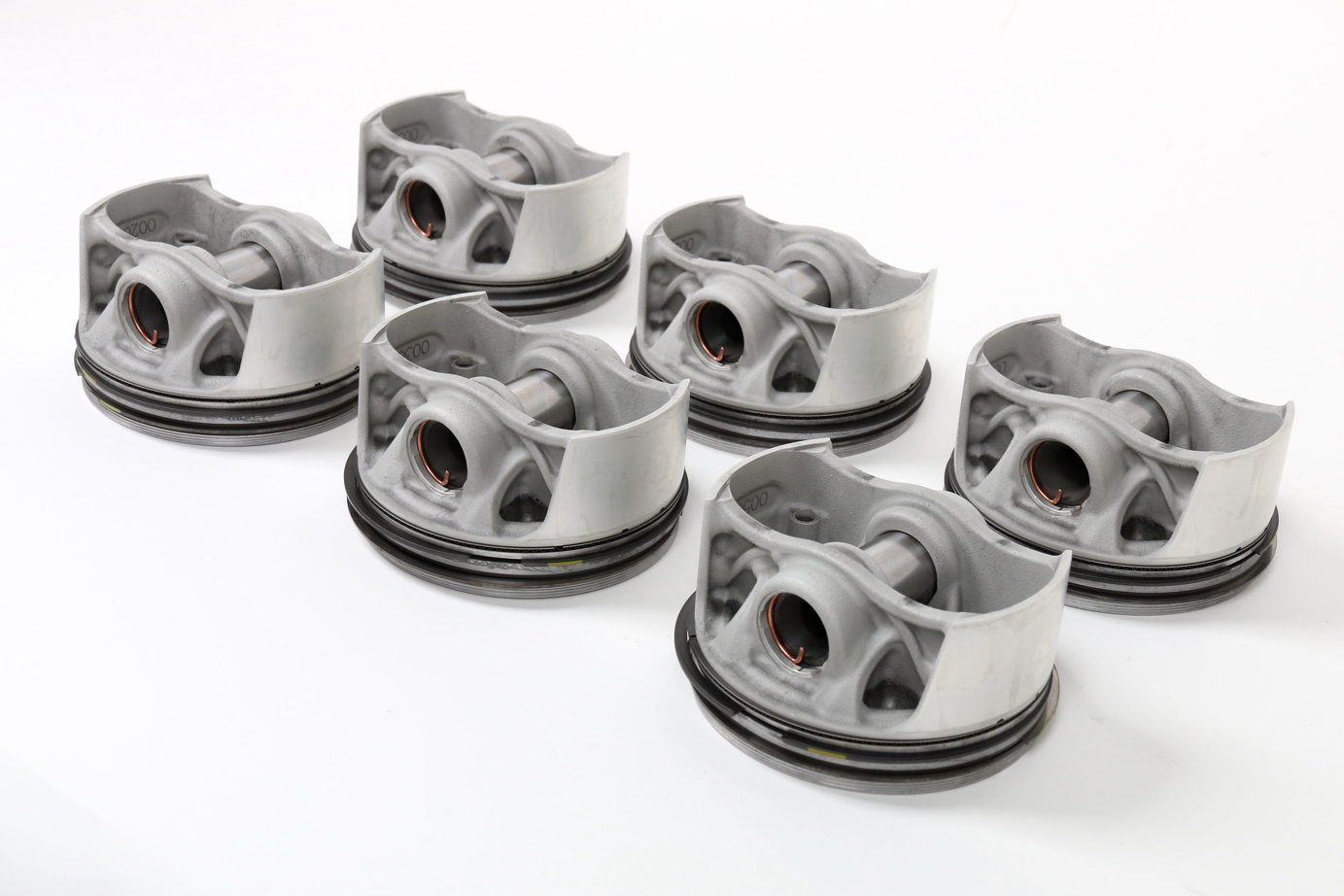Microstructure Refinement: Enhancing Alloy Lifespan
Introduction to Microstructure Refinement in Superalloys
Superalloys are high-performance materials that excel in environments subjected to extreme temperatures, high stress, and corrosive conditions. Superalloys are the backbone of critical components like turbine blades, engine parts, and pressure vessels used extensively in aerospace, power generation, and petrochemicals. These materials are engineered to withstand the most demanding conditions, but even the best superalloys can suffer from degradation over time if their microstructure needs to be adequately managed.
Microstructure refinement is pivotal in improving superalloy components' lifespan, reliability, and performance. Manufacturers can significantly increase superalloy parts' longevity by enhancing grain structure, controlling phase formation, and minimizing inclusions. This process ensures that components perform optimally under extreme conditions and remain durable throughout their service life. Refining the microstructure of superalloys also contributes to maintaining their ability to withstand high-temperature exposure and resist creep deformation, making them essential in industries like power generation and oil and gas.

This blog will explore how microstructure refinement helps superalloys maintain superior mechanical properties such as creep resistance, fatigue life, and high-temperature stability, ultimately enhancing their service life in critical applications.
Understanding Superalloy Microstructure
Definition of Microstructure in Superalloys
Microstructure refers to the arrangement and characteristics of the phases, grains, and inclusions in a material at a microscopic level. For superalloys, the microstructure dictates how the material behaves under high stress, temperature, and chemical exposure. The critical components of superalloy microstructure include:
Grains: Individual crystalline structures within the superalloy. The size and alignment of these grains affect the material's strength and resistance to deformation.
Phases: Distinct regions with different chemical compositions or structures within the alloy, such as gamma-prime (γ') precipitates in nickel-based superalloys.
Inclusions: Non-metallic particles trapped within the material during manufacturing can negatively impact the alloy's mechanical properties.
The microstructure's organization directly influences critical properties such as strength, toughness, and corrosion resistance, making it a key factor in the performance and longevity of high-temperature alloy components.
Role of Microstructure in Superalloy Performance
Superalloys must perform under extreme conditions—high temperatures, mechanical stress, and exposure to corrosive environments. Microstructure refinement enhances several critical mechanical properties, such as:
Fatigue Resistance: A fine, uniform grain structure reduces the likelihood of fatigue crack initiation and propagation, essential for components exposed to cyclic stresses, such as turbine blades. The optimization of superalloy microstructures plays a crucial role in increasing fatigue resistance.
Creep Strength: The ability to resist deformation under high stress at elevated temperatures is primarily determined by the size and distribution of precipitates and grain boundaries. Refining superalloy microstructures improves creep strength, ensuring long-term reliability at high temperatures.
High-Temperature Stability: Superalloys must retain their mechanical properties at temperatures exceeding 1000°C. Microstructure refinement helps minimize grain growth, which can degrade the material's strength at high temperatures. The role of heat treatment in controlling microstructure is pivotal for achieving high-temperature stability and enhanced performance.
Manufacturers can significantly enhance the performance, reliability, and durability of components used in aerospace and other high-performance applications by understanding and controlling superalloy microstructure.
Key Factors Influencing Superalloy Microstructure
Alloy Composition
The alloy composition is the foundation of microstructure in superalloys. Chromium, nickel, cobalt, and molybdenum contribute to phase formation, precipitation hardening, and grain refinement. For example:
Nickel-based superalloys (e.g., Inconel) rely on the presence of elements like aluminum and titanium to form γ' (gamma-prime) precipitates that strengthen the material.
Cobalt-based superalloys often contain chromium and rhenium, which form solid solution phases that enhance resistance to oxidation and creep.
By controlling the alloying elements and their proportions, manufacturers can optimize the superalloy's microstructure for specific applications, including vacuum investment and single crystal casting.
Casting and Forging Methods
The manufacturing method significantly influences the initial microstructure:
Vacuum Investment Casting: This method allows for precise control of alloy composition and minimizes defects such as inclusions and porosity. The resulting microstructure often requires refinement through heat treatment to enhance its properties.
Single-Crystal Casting: This method creates components with a uniform, defect-free microstructure. It eliminates grain boundaries, improving creep resistance and fatigue life, making it ideal for turbine blades in aerospace applications.
Directional Solidification: By controlling the cooling rate and direction, directional solidification creates a microstructure where the grains align in a single direction, enhancing the material's mechanical properties under stress.
Forging techniques like isothermal, rough, and free forging are crucial in controlling grain size and phase distribution. Forging helps achieve a delicate, homogenous microstructure that enhances the strength and toughness of the final part.
Heat Treatment and Aging
Heat treatment is essential for optimizing the microstructure of superalloys:
Solutionizing: This involves heating the material to a high temperature to dissolve residues, followed by rapid cooling to trap the desired phase distribution. This process is essential for achieving dimensional stability.
Aging: A process where the material is heated at lower temperatures to allow precipitation of challenging phases like γ', improving strength and resistance to deformation. Aging plays a crucial role in optimizing superalloy castings for high-temperature applications.
Combining solutionizing and aging optimizes precipitation hardening and fine-tunes the microstructure to enhance the material's properties for specific applications. These methods ensure that turbine blades and other superalloy components perform reliably under extreme conditions.
Microstructure Refinement Techniques in Superalloys
Grain Boundary Control
Controlling grain boundaries is critical for improving superalloys' fatigue and creep resistance. Fine-grained structures offer the following benefits:
Increased Strength: Smaller grains result in more grain boundaries, which impede the movement of dislocations, leading to higher strength.
Enhanced Fatigue Life: Fine grains reduce the formation of fatigue cracks at the grain boundaries, improving the component's ability to withstand repeated stress cycles.
Techniques to refine grain boundaries include high-temperature processing and controlled cooling rates during casting and forging. By carefully controlling these parameters, manufacturers can achieve a fine and uniform grain structure, boosting the alloy's performance in extreme environments, especially in aerospace and power generation.
Directional Solidification and Single-Crystal Techniques
Directional solidification and single-crystal casting are powerful techniques for creating a refined microstructure:
Directional Solidification: This method creates a microstructure with aligned grains, improving mechanical properties like tensile strength and fatigue resistance. It also reduces the risk of casting defects such as porosity. Directional solidification is often used to produce critical components such as turbine blades and other high-stress parts requiring high-temperature stability. For instance, turbine blades made with this method are ideal for gas turbines.
Single-Crystal Casting: Eliminates grain boundaries, resulting in components with superior creep resistance and high-temperature stability. Single-crystal turbine blades, for example, have significantly better lifespan and performance under engine conditions. This technique is particularly beneficial in industries such as aerospace and energy, where high-stress and thermal cycling occur every day.
These techniques are integral to enhancing superalloy performance, especially in high-performance applications like gas turbines, where longevity and resistance to high stresses are paramount.
Precipitation Strengthening
Controlled precipitation of phases such as γ' is crucial in superalloy microstructure refinement. By optimizing the size, distribution, and morphology of these precipitates, manufacturers can improve the material's:
Strength: Precipitate particles act as barriers to dislocation motion, enhancing the material's ability to resist deformation. It makes superalloys more suitable for high-stress environments.
Wear Resistance: Precipitates also contribute to wear resistance, making the material more durable in abrasive environments, such as those encountered in oil and mining industries.
Aging and rapid cooling during manufacturing allow for precise precipitation control, ensuring optimal material properties that improve component performance. This process benefits superalloys used in extreme conditions, where material integrity is essential for reliable performance.
Inclusion Control
Inclusions—non-metallic particles embedded within the superalloy—can significantly reduce material strength and lifespan. These inclusions act as stress concentrators, leading to crack initiation and propagation.
Manufacturers employ clean melting (vacuum induction melting) and degassing to remove impurities to minimize inclusions. Controlling the environment during casting and forging also helps reduce the presence of inclusions and improves the overall integrity of the superalloy. Reducing inclusions ensures the material can withstand extreme conditions and enhances its reliability and performance in critical applications.
Case Studies: Microstructure Refinement in Practice
Aerospace Components (e.g., Turbine Blades)
Turbine blades are subject to high stresses and temperatures in aerospace engines. Microstructure refinement, mainly through single-crystal casting, improves the lifespan of these components by preventing defects and enhancing creep resistance.
Power Generation Equipment
Superalloy turbine discs used in power plants benefit from directional solidification and strengthening of precipitation. These techniques improve the components' ability to withstand high temperatures and stress cycles, extending their operational life.
Marine and Chemical Industries
Superalloy components used in marine and petrochemical environments must resist high temperatures and corrosive environments. Microstructure refinement ensures these parts can handle extreme conditions, improving reliability and longevity.
The Benefits of Microstructure Refinement for Superalloy Lifespan
Improved Creep Resistance
Fine-grain structures and optimized precipitates enhance the material's ability to resist deformation under prolonged stress at high temperatures. Microstructure refinement significantly improves the creep resistance of superalloy components by preventing the movement of dislocations. It makes them ideal for high-temperature applications such as turbine engines, where components must withstand extreme conditions without deforming over time.
Enhanced Fatigue Life
They reduce defects and optimize grain boundaries to improve fatigue resistance, which is critical for components exposed to cyclic stresses. Superalloys with refined grains and controlled precipitates exhibit less crack propagation, leading to a longer service life. It mainly benefits aerospace parts like turbine blades, where components must endure repeated loading and unloading cycles.
Increased High-Temperature Stability
Superalloys must maintain their mechanical properties under extreme temperature conditions. Refined microstructure helps maintain high-temperature stability by preventing grain growth and ensuring the material retains its strength and toughness, even at elevated temperatures. It ensures the longevity and performance of critical components like turbine blades and combustion chambers.
Corrosion and Oxidation Resistance
A refined microstructure improves corrosion resistance by reducing the formation of oxide layers and minimizing the exposure of vulnerable grain boundaries. It is crucial for components exposed to aggressive environments, such as those in chemical plants or aerospace engines, where corrosion and oxidation can significantly reduce the material's lifespan. By optimizing microstructure, the superalloy's resistance to these harmful processes is enhanced, ensuring better durability in harsh conditions.
Microstructure refinement, therefore, plays a vital role in extending the lifespan and improving the reliability of superalloy components used in demanding industries such as aerospace, energy, and chemical processing.
Challenges and Considerations
Balancing Performance with Cost
Advanced microstructure refinement techniques often come with higher production costs. Manufacturers must balance the benefits of enhanced performance with the additional investment in time and resources. For instance, while vacuum investment casting offers precise control over alloy composition, the increased production costs can be significant. Similarly, investing in advanced single crystal casting processes may enhance performance but comes with increased material costs and complex production requirements.
Material Characterization and Testing
To ensure the refined microstructure meets performance standards, advanced testing methods like SEM (Scanning Electron Microscopy) and EBSD (Electron Backscatter Diffraction) are critical for verifying that the material has the desired properties. These techniques enable manufacturers to confirm the precise microstructure, ensuring that the final product meets stringent requirements for high-performance applications such as turbine blades in aerospace.
Evolving Technologies and Future Directions
Innovations in additive manufacturing (3D printing) and advanced heat treatments are opening new avenues for microstructure refinement. These technologies offer greater precision and flexibility in tailoring superalloy microstructures for specific applications. With 3D printing, manufacturers can control the cooling rates and directional solidification processes more efficiently, enabling the production of components with unique microstructures. Moreover, advancements in vacuum heat treatment enhance the ability to refine microstructures and optimize material properties without introducing defects, thus broadening the scope of applications for superalloy components.
Stress Relief in Superalloy Castings: FAQs
Why is grain refinement important for superalloy lifespan?
How does precipitation strengthening enhance superalloys?
What role does inclusion control play in superalloy performance?
How does microstructure refinement affect the cost of production?
Can additive manufacturing improve microstructure refinement in superalloys?



